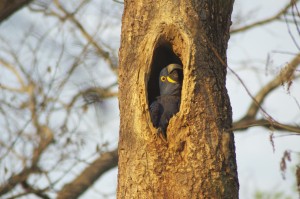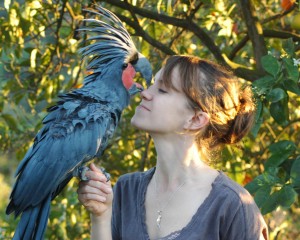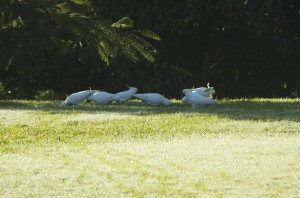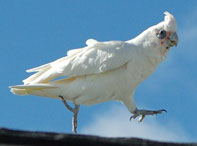I am a huge fan of the World Parrot Trust and have been very lucky to have heard  Executive Director Jamie Gilardi speak in a few different venues. Observing parrots in the wild is a tremendous passion of mine and one that has taken me to some of the most incredible (and remote!) places on the planet. I have learned so much not just from the wild parrots themselves but also from the people who share the parrots’ natural habitat. This has helped me make lifestyle and environmental changes for my own parrots to enrich their lives.
Executive Director Jamie Gilardi speak in a few different venues. Observing parrots in the wild is a tremendous passion of mine and one that has taken me to some of the most incredible (and remote!) places on the planet. I have learned so much not just from the wild parrots themselves but also from the people who share the parrots’ natural habitat. This has helped me make lifestyle and environmental changes for my own parrots to enrich their lives.
Naturally, when I was recently asked to contribute as an expert on the World Parrot Trust’s “Ask the Experts” forum, I was thrilled and flattered. My first response was about a biting African grey parrot. Biting is such a common problem, and many times I get calls from people looking for a one-size-fits-all solution: “My parrot bites, what do I do?”
a biting African grey parrot. Biting is such a common problem, and many times I get calls from people looking for a one-size-fits-all solution: “My parrot bites, what do I do?”
Unfortunately for those that believe there is a quick fix, the only answer there is, “Don’t put your hand close enough to the parrot’s beak to get bitten”! Biting is an operant, or learned, behavior. We teach our birds to bite because they learn from us that is the only way they can get their point across in those conditions that they bite. While many say that being bitten is part of parrot ownership, a bite wound is not a badge of honor but rather a sign of our failure to communicate (did you just think of Cool Hand Luke? Yeah, me too….). We put that bird in a position that he felt he needed to bite. The key things to remember with any behavior problem is to prevent the behavior from occurring, and replace the wrong behavior with a more desirable alternative.
 So, check out the World Parrot Trust’s Ask an Expert forum, and let your bird communicate to you before he has to resort to biting. If you see the warning signs, remove your hand and step back until he returns to showing calm behavior. Then devise a plan how you can accomplish the same task that produced the undesirable body language in another way that will make the bird a willing and eager participant.
So, check out the World Parrot Trust’s Ask an Expert forum, and let your bird communicate to you before he has to resort to biting. If you see the warning signs, remove your hand and step back until he returns to showing calm behavior. Then devise a plan how you can accomplish the same task that produced the undesirable body language in another way that will make the bird a willing and eager participant.
(The above pic is actually of wild greater sulfur crested cockatoos on someone’s lawn in Queensland, Australia…. not my backyard!)
Yours in unscarred fingers,
hh

